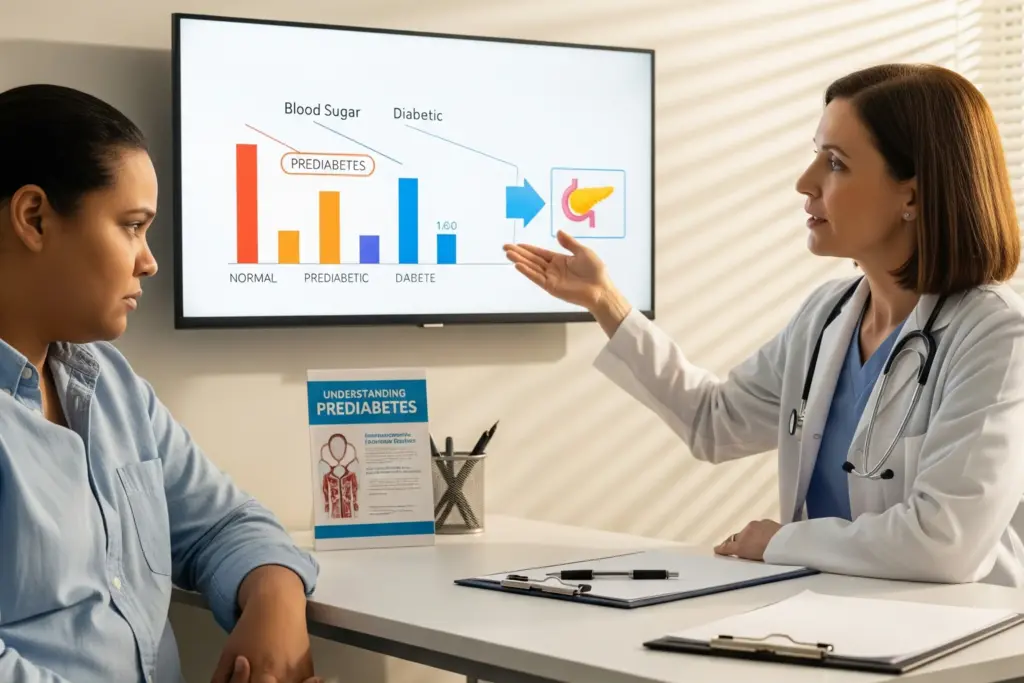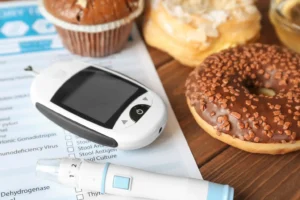
Prediabetes symptoms: Our bodies always give us signs when something’s not right. Prediabetes isn’t loud at first; it starts with small changes you can easily miss. Many people ignore these early warnings, but catching prediabetes early can prevent serious health problems down the road.
Understanding prediabetes
Prediabetes means your blood sugar levels are higher than normal. However, the levels are not high enough for doctors to diagnose diabetes. It’s like a yellow traffic light on the road warning you to slow down and pay attention. Your body struggles to process sugar properly, but it hasn’t completely lost control yet.
Also Read | Type 1 vs. Type 2 diabetes: What are the differences?
Surprisingly, one in three adults is likely to have prediabetes, and yet they aren’t aware of it. That’s because symptoms develop slowly and quietly.
Prediabetes warning signs
Your body gives you clues when prediabetes develops. Pay attention to these warning signs:
- Constant fatigue hits many people with prediabetes. You feel worn out even after sleeping well. This happens because your cells can’t use sugar for energy effectively.
- Increased thirst and frequent urination occur when your kidneys work overtime to filter excess sugar from your blood. You might find yourself drinking more water and making more bathroom trips.
- Blurred vision develops when high blood sugar causes fluid to shift in your eyes. Your vision becomes fuzzy or unclear, especially when reading or looking at screens.
- Slow-healing cuts and infections signal that your immune system isn’t working at full strength. Small wounds take longer to heal, and you might get more infections than usual.
- Dark patches of skin called acanthosis nigricans appear on your neck, armpits, or groin. These velvety, dark areas indicate insulin resistance.
- Unexpected weight gain happens when your body stores more sugar as fat. You might gain weight even when you haven’t changed your eating habits.
- Tingling in hands and feet occurs when high blood sugar damages your nerves. This numbness or tingling sensation often starts in your fingers and toes.

Risk factors that increase your chance of prediabetes:
Some aspects make prediabetes more likely. People over 45 are at higher risk. Family history matters too. If your parents or siblings have diabetes, your chances increase. Being overweight, especially in the tummy area, raises your risk. An inactive lifestyle makes things worse. High blood pressure and abnormal cholesterol levels also contribute to prediabetes development.
How to prevent prediabetes:
The good news is you can reverse prediabetes with lifestyle changes. Try losing just 5-7% of your body weight, this makes a huge difference. Regular exercise helps your body use insulin better. Join activities you enjoy like walking, swimming, dancing, or playing sports.
Eating better doesn’t mean giving up everything you love. Add more whole foods like vegetables, fruits, lean proteins, and whole grains to your diet. Limit sugary drinks and processed foods. These small changes can lead to big results.
Also Read | The diabetes-cholesterol connection: What every patient should know
Prediabetes doesn’t give warning signs. Schedule regular checkups with your doctor. Simple blood tests can detect prediabetes early. Knowledge gives you the power to make informed decisions about your health and prevent type 2 diabetes from developing.








